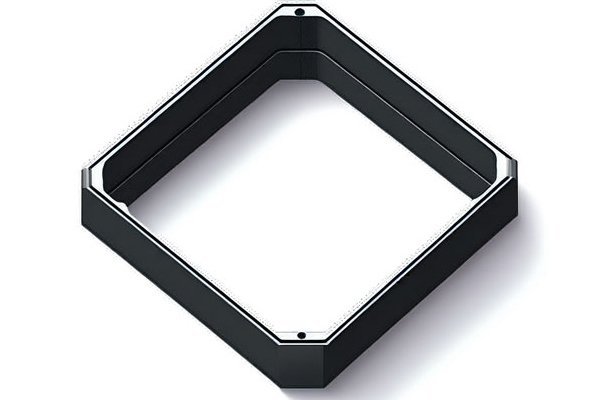: The Intricacies of CNC Machining
Did you know that aluminum is one of the most widely used metals in the world, with over 60 million tons produced yearly? This lightweight metal has become foundational in industries ranging from aerospace to automotive to construction. Aluminum alloys, particularly 6061 and 5083, are heavily utilized in CNC (Computer Numerical Control) turning processes. However, the complexities surrounding the machining of these materials can lead to a plethora of questions for engineers, manufacturers, and hobbyists alike. How difficult is CNC turning for 6061 aluminum compared to 5083 aluminum?
In this blog, we’ll dive deeply into the characteristics, challenges, and techniques involved in the CNC turning of these two alloys. We’ll explore why understanding these differences is crucial, and the solutions to optimize your machining processes, whether you’re a seasoned machinist or just getting started.
Understanding the Basics: What is CNC Turning?
CNC turning is a manufacturing process involving the rotation of a workpiece while a cutting tool is applied to create cylindrical parts. This technique is prevalent due to its precision and efficiency. CNC lathe machines can create complex shapes and features in materials, including different metals and plastics.
1.1 Composition and Properties
6061 aluminum is an alloy primarily made up of aluminum, magnesium, and silicon. Known for its excellent mechanical properties and corrosion resistance, 6061 is widely regarded as a versatile alloy suitable for various applications.
Strength: 6061 offers a tensile strength ranging from 20,000 to 42,000 psi.
Corrosion Resistance: Excellent in various environments, making it ideal for marine applications.
Weldability: Very good, allowing it to be easily machined and fabricated.
1.2 Applications
6061 aluminum is used in a multitude of applications, including:
Aircraft structures
Marine components
Automobile parts
Structural applications
2.1 Composition and Properties
5083 aluminum is primarily composed of aluminum and magnesium, with the inclusion of manganese. It is renowned for its excellent resistance to corrosion, specifically in marine environments, due to its high magnesium content.
Strength: Its tensile strength ranges around 30,000 to 50,000 psi, especially in the heat-treated state.
Corrosion Resistance: Exceptional, particularly in seawater environments.
Weldability: Excellent, allowing for high-quality welds.
2.2 Applications
Common applications for 5083 aluminum include:
Shipbuilding components
Pressure vessels
Marine structures
Trucks and trailers
3.1 Machinability Differences

Both 6061 and 5083 aluminum have their unique machining characteristics, which impact the CNC turning process.
6061 Aluminum:
5083 Aluminum:
Understanding these differences ensures that appropriate tooling, feeds, and speeds are selected for each material.
3.2 Tool Life and Wear
CNC turning tools can experience varying levels of wear depending on the material being machined.
6061 Aluminum: Lower tool wear means that tools can last longer and require less frequent replacement.
5083 Aluminum: The work-hardening nature can cause faster tool wear, leading to higher replacement and maintenance costs.
4.1 Selecting the Right Tooling
Choosing the appropriate cutting tools is critical in minimizing wear and enhancing performance:
For 6061 Aluminum: Use high-speed steel (HSS) or carbide cutting tools with a sharp edge to achieve optimal results with minimal tool wear.
For 5083 Aluminum: Consider using specialized carbide tools designed for aluminum machining to handle the tougher nature of the material.
4.2 Adjusting Feeds and Speeds
Implementing the correct feed rates and spindle speeds is crucial for both alloys:
6061 Aluminum: Higher spindle speeds (around 2000-3000 RPM) and faster feeds (around 0.1-0.3 inches per revolution) can be used.
5083 Aluminum: Slower spindle speeds and carefully controlled feed rates (0.05-0.1 inches per revolution) help mitigate work hardening.
4.3 Utilizing Coolants
Using the right cutting fluids can significantly impact the machining process:
6061 Aluminum: Water-soluble cutting fluids can help reduce heat and improve surface finish.
5083 Aluminum: Oil-based coolants may be more effective in reducing friction and heat during machining.
CNC turning of aluminum 6061 and 5083 alloys presents unique opportunities and challenges for professionals in the industry. By understanding the properties, challenges, and best practices for machining these two alloys, manufacturers can make informed decisions that improve productivity and reduce costs.
Final Thoughts
This blog serves as a comprehensive guide for anyone involved in or considering CNC turning of these aluminum alloys. With key factors like machinability, tooling, and techniques highlighted, it emphasizes the importance of tailoring processes to the unique properties of the materials at hand.
Remember, understanding your materials can lead to more efficient and cost-effective manufacturing processes. So the next time you’re faced with a machining project involving aluminum 6061 or 5083, apply these insights for optimal outcomes. Your success may just depend on the tactics you employ today!






